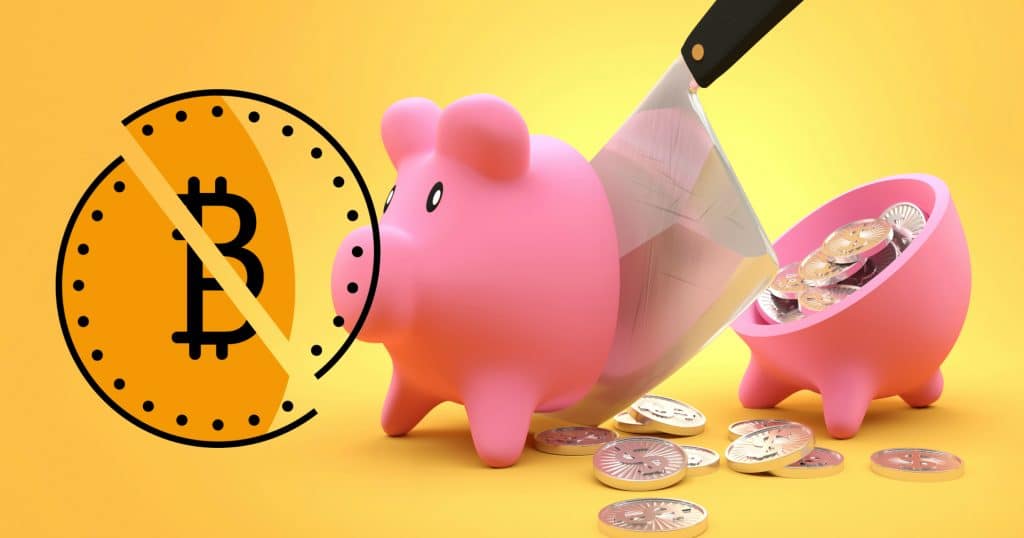To understand bitcoin’s “halving”, we must first sort out what so-called miners do. Miners are computers that keep the bitcoin network running. They compete against each other by solving difficult mathematical equations – and the miner that wins that competition is given the opportunity to add (verify) a new block, full of bitcoin transactions, to the blockchain.
As a reward for this work, a kind of incentive to keep the network running, the winning miner receives newly created bitcoin. This is called block reward.
However, at every 210,000 blocks that are added, which is about every four years, this reward is halved, and that is precisely what is called the bitcoin halving.
Built into the system
This halving is built into the bitcoin system itself and was created by bitcoin’s inventor Satoshi Nakamoto. The purpose of the halving is to keep the cryptocurrency’s inflation under control, i.e. to ensure that bitcoin does not lose value over time.
The idea is that this process will continue until a total of 21 million bitcoin is created, something that is expected to happen sometime in the year 2140. After that, there will be no more bitcoin created, and the number that then exists in the world will be constant, unlike fiat money that can be printed. One could compare this to gold which also has a fixed amount.
The only question is how this phenomenon affects the price of the world’s biggest cryptocurrency.
The previous halvings
The first halving for bitcoin took place on November 28, 2012. Then the reward to all winning miners was cut in half from 50 to 25 bitcoin. About a year later, the bitcoin price had soared to over $1,000.
The second halving occurred on July 9, 2016, when the rewards were again cut in half – from 25 to 12.5 bitcoin. About a year and a half after that, the bitcoin price reached its all-time high so far: around $19,500.
Notably, the price has also soared ahead of the first two halvings. At the first one, an upward price trend began to form about a year before, and at the second one, the price began to rise around nine months before, according to a review that the blog Noteworthy has done.
The third halving is currently expected to take place sometime in May 2020. Then the reward will go from 12.5 to 6.25 bitcoin.
Does this mean that the bitcoin price will rally both before and after this halving, just as it did before?
Not necessarily, though many in the crypto world think so.
What will happen to the price?
As fewer and fewer bitcoin will be created in the future, many believe that the value of those that exist simply will increase. In particular, if the demand for bitcoin also increases. If we look historically, the price has indeed gone up both before and after the halvings.
But the truth is that no one knows exactly how the value of bitcoin will be affected by the halving. Historical events are no guarantee of future price fluctuations.
Some believe that the price will rise from now until the halving next spring, while others believe that the rally will take place after the halving. Then there are also those who claim that the halving is so well known in the crypto world that it is already priced in and will not affect the bitcoin price very much at all.
Although one thing that most people seem to agree on is that the bitcoin price will not go down because of the halving.
How do all miners react?
Another aspect is how all miners will react to the fact that the reward for their work is suddenly cut in half.
Historically, some miners have given up and stopped mining when the reward has been halved, something that can affect bitcoins so-called “hash rate”, i.e. how quickly the bitcoin mining happens. But the majority of miners have nevertheless chosen to continue mine and hold the bitcoin that they have received until then.
“Miners have historically shown a willingness to maintain or increase computing power through halving events because they expect future bitcoin price increases to offset the reduced block reward”, Garrick Hileman, head of research at Blockchain.com, previously said, according to Forbes.
Other things can also affect
Looking back in time, there have also been more things that probably affected the bitcoin price before and after the previous halvings, something Moe Adham, founder and CEO of the Canadian blockchain company Bitaccess, has pointed out.
For example, in the first halving 2012, no one knew what would happen because it was the first time a halving occurred. And the large price increase after the second halving occurred while the cryptocurrency ethereum grew during the ICO hype. Such factors may also have played a role.
According to Moe Adham, the biggest factors ahead and after the coming halving in 2020 will be that the general interest in bitcoin is constantly increasing, and that institutional investors are becoming more and more interested in cryptocurrencies.





